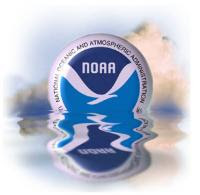
An unnamed source within NASA intimately familiar with the mothballed
Deep Space Climate Observatory (DSCOVR) mission spoke to me on the condition of anonymity.
The story is incredible.
The big question has always been: who would want to kill a $100 million fully completed climate satellite that has sat in a box since the 2000 presidential election - even though dozens of leading scientists have demanded it be launched?
“Apparently Cheney was the hatchet man”, said the source. “Bush tried the keep his hands clean so he didn’t have direct involvement. It almost reminds me of the way Nixon used to operate…He assigned Cheney to be the hatchet man job on DSCOVR… Bush’s fingerprints weren’t on it but Cheney’s were… That’s what we heard through the grapevine.”
Our source did not want their identity revealed due to the pervasive culture of fear that permeates NASA under the Bush Administration: “People are somewhat intimidated – but it will all unravel. People will talk. It will come out. These things always do.”
So why would the Bush Administration want DSCOVR dead?
Our source offered these thoughts:
“The reputation in early days was that Al Gore thought of it, so when Bush was elected the mission basically just disappeared. It never got launched. And that had never happened at NASA before…That’s what so weird about it. The people at NASA Headquarters, the ones who won’t return your phone calls and won’t talk about it - their position is that this is just a normal course of events. It’s really strange. They are obviously covering something up.”
Beyond Gore, there was also the issue that DSCOVR would further our understanding of climate change - something the Bush Administration was never keen on. According to our source:
“The Whitehouse...felt threatened by [DSCOVR]. They didn’t want to hear anything about the Earth changing because that meant climate change, and that means CO2 and then they would have to regulate CO2 and they just wanted to avoid anything to do with that… Cheney was the chief hatch man on climate change in general. That’s the rumor that went around.”
Of course there is little chance of finding hard evidence of Whitehouse interference in this mission. I have filed numerous freedom of information requests with NASA, NOAA and the Whitehouse but came up with almost nothing. The Whitehouse is not even subject to FOIA anymore. Virtually all internal documents related to the DSCOVR mission have been kept secret.
Our source is not surprised: “That’s going to be really hard to nail because Cheney is deleting all his emails.”
It turns out that the mission was always a weird one. The NASA leadership insisted from the start that this spacecraft fly into orbit aboard the space shuttle. Those close to the mission were incredulous.
“There was the stupidity of putting it one the shuttle. That was just absolutely silly. You don’t launch satellites to that high of an orbit on the shuttle. The normal NASA tradition is to launch a satellite like that on a rocket.”
Because DSCOVR had to go far beyond the low Earth orbit accessible by the shuttle, a large rocket motor would need to fly aboard the shuttle to boost DSCOVR to L1 one million miles distant. Not a good idea.
“A big rocket motor with its fuel tanks filled is basically a bomb. Using the shuttle as a carrier for what is basically a bomb is not smart. It was absolutely stupid from the get-go.”
So why was the mission forced onto the shuttle?
“There’s no good reason. NASA will give you reasons but there’s actually no good reason. It was a very strange decision. It was a decision that the science team tried to fight but were never able to even get to first base on,” said our source.
They were told by NASA brass ‘we’re going to launch it on the shuttle and that’s that and don’t talk to us about it and stop complaining’”.
Our source also provides a chilling insider account of how the spacecraft was on track to be launched by another agency as late as last year, but was abruptly cancelled.
“It seemed that everything was on track to give the satellite to NOAA and they would be refurbish and launch it and then - boom. It just disappeared off the radar screen and no one would talk about it. It was very weird. It gave me the creeps actually. I’ve never seen that happen at NASA before, where things would disappear and no one would talk about them. It was like the way people would disappear in a dictatorship regime.”
Our source made no bones about the importance of this novel experiment to provide continuous monitoring of the daytime and nighttime profiles of our planet.
While DSCOVR’s destination L1 is one million miles towards the sun, there is another gravitational parking spot called L2 away from the Sun. If a similar spacecraft were also placed there, scientists would have simultaneous views of the both the daytime and nighttime profiles of our warming planet.
“Those two points would have been revolutionary for doing remote sensing of the Earth. All our satellites are in Sun-synchronous orbit meaning that they pass over the same time every day. So you have no way of getting information about the so-called diurnal cycle. DCSOVR and another satellite at L2 would mean the whole Earth would be covered.”
This combination of DSCOVR at L1 and similar spacecraft at L2 would also allow scientists to resolve glaring gaps in our understanding of the Earth’s energy budget and our understanding of global warming.
“Low Earth orbit satellites are not able to close the Earth’s outgoing radiation budget. It’s pretty far off - it’s quite an embarrassment… They can’t close the Earth’s radiation budget better than six watts per square meter. We have every reason to believe to that the Earth is out of balance by only one watt for square meter, which accounts the global warming. It was so embarrassing they kept it quiet for a while”
DSCOVR would not only solve that important problem but also provide a completely new perspective for NASA to carry out their important mandate of monitoring our changing planet.
“It would have been significant because it would mean that NASA was finally getting out of low Earth orbit, where they’re stuck. NASA doesn’t have any high Earth orbit satellites, not geostationary, not L1, not L2. It’s very weird. “
You would think that resolving the Earth’s energy budget at this point in history would be a priority for NASA, especially given they have a perfectly good $100 million instrument sitting in a box that would help them do that. But I digress…
NASA leadership have also frequently relied on the so-called Decadal Survey as a rationale for killing DSCOVR. This study was an effort to prioritize potential NASA missions for the next ten years. DSCOVR was not prominently featured in this assessment, but our source is not surprised.
“All the people involved in the Decadal Survey knew what NASA’s attitude toward DCSOVR was. They weren’t going to take on a political hot potato, why should they? It wasn’t that they thought it was a bad idea, it’s that they were politically sensitive… So they ignored it. So for NASA now to use their ignoring it as an argument against it is really hypocritical frankly.”
For some reason DSCOVR was also included in this assessment even though it was already built at a cost $100 million, something our source feels is incredible.
“It’s putting DSCOVR in the same hopper as un-built missions. And that’s kind of silly… It didn’t really need to be ranked by the decadal survey. Suppose every mission that NASA built was then subjected of to a panel of scientists to decide whether to launch it or not? That would be kind of silly wouldn’t it? The whole thing is just sheer hypocrisy.
What about the peculiar notion of the Air Force launching DSCOVR without the earth observing instruments as a way to save money? Our source it at a loss as to why NASA would ever consider doing that.
“That’s just bizarre… The instruments would have to be refurbished but NASA gave some ridiculously outsized estimate of what it would cost to do that. It was like ten times too high, in order to kill the idea of having Earth viewing instruments. There have been a lot of shenanigans around this mission. It’s embarrassing for me personally because I used to have huge respect for NASA and I’ve lost some. I’ve seen people do stuff that I would never thought I would see people do.”
Our contact was cautiously hopeful that things at NASA may change in the future.
“The Whitehouse created a climate of fear within government and that was intentional. But the administration is changing… Once Bush is truly out, things will start to unravel. Eventually the whole crowd at NASA headquarters will change and then there might be a new a spirit of openness. Or they might want to just bury the past and move on…”
And what about DSCOVR?
“It’s sad for NASA that they are stuck trying the trash DSCOVR when it’s actually a great idea…They hate it so much at this point that they are determined to put it in a box and keep it there forever…They’re just trying the figure out how to bury it.”
I will of course continue digging on DSCOVR to make sure that doesn’t happen. The cone of silence around this fascinating story is starting to crumble but the clock is ticking bring out the truth before the spacecraft is destroyed.
If anyone else close to this mission has information to share, Please contact me here in confidence. It will be our little secret…
















